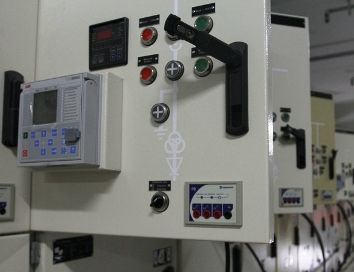Inspection of substation electrical installations by operational personnel
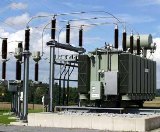 One of the duties of the electrical operating personnel is to inspect the equipment of the electrical installations. Why should you check equipment? First, for the timely detection of technical malfunctions, remarks in the operation of the equipment, as well as the timely localization and elimination of an emergency situation.
One of the duties of the electrical operating personnel is to inspect the equipment of the electrical installations. Why should you check equipment? First, for the timely detection of technical malfunctions, remarks in the operation of the equipment, as well as the timely localization and elimination of an emergency situation.
Operating personnel during the inspection of a certain item of equipment of an electrical installation must know what to look for and what signs are not characteristic of the normal operation of the equipment. In this article, we will consider the basic rules of inspection when it is necessary to carry out inspections, as well as the characteristics of the inspection of the main elements of the equipment of electrical installations.
The inspection of the equipment of the electrical installations is carried out by personnel who have undergone appropriate training in labor protection, fire safetyas well as familiar equipment maintenance instructions and other regulations.To check the electrical installations, the staff must have III electrical safety group.
As a rule, electrical installations with permanent maintenance personnel are checked at least twice a day. If there is no permanent maintenance staff in the substation, then the check is carried out once a day.
The equipment of the electrical installations of the substation is periodically inspected according to the approved route. That is, the staff checks the equipment in a strict sequence, moving through the territory of the power facility along the established routes.
In addition to routine equipment checks, so-called extraordinary checks are carried out. Additional or extraordinary examinations are carried out in the following cases:
-
in adverse weather conditions: during fog, during precipitation, rain, storm, pollution, ice;
-
after a thunderstorm. In this case, the equipment of open switchgear, in particular limiters and voltage limiters, is checked for operation during a thunderstorm according to established recorders;
-
in case of an emergency. For example, after the automatic shutdown of the equipment, the first thing to do is to check the disconnected equipment for damage and other notes in operation (oil release, switch that is not turned off, external noise, smell of burning, etc. . );
-
at night to detect heating of the contact connections, discharges and corona of the equipment. In this case, the inspection is carried out at least twice a month at night, mainly in wet weather, for example after rain or in heavy fog.
The results of the equipment check are recorded in the operational documentation of the electrical installation. After checking the equipment, the staff makes a corresponding entry in the operational log and reports the results to the higher operational staff - the duty dispatcher.
If during the inspection of the equipment, remarks, defects are found, then it is necessary to record this in the operational log, as well as in the log of equipment defects. After that, the staff on duty informs not only the dispatcher about the discovered remarks, but also the top management (engineering and technical staff of the enterprise) for planning work to eliminate the malfunctions in the operation of the equipment.
In some cases, for example, when an accident is detected that can endanger the safety of people and the integrity of the equipment, the operating personnel must independently take immediate measures to eliminate the danger that has arisen.
In all other cases, upon detection of defects in the operation of the equipment, the operating personnel first notify the senior personnel, and then, under their guidance, carry out the elimination of the emergency situation that has arisen.
Now we will consider what to look for when checking one or another piece of equipment in an electrical installation, in particular an electrical distribution substation.
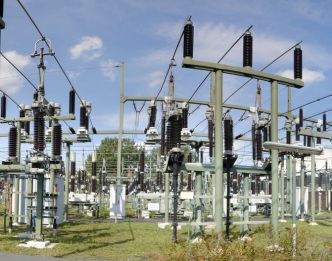
Autotransformers and transformers
The first thing you should pay attention to when checking these items of equipment is the absence of extraneous noise during the operation of the transformer (autotransformer).The presence of sounds that are uncharacteristic of the normal operation of the transformer indicates that a malfunction of one or another structural element is possible.
Grounding existing electrical equipment is one of the primary measures to protect service personnel from electric shock. Therefore, before approaching a working (auto) transformer, it is necessary to ensure that the ground bus is present and intact.
It is also necessary to check the oil level in the transformer tank and on-load switch. As a general rule, the oil level on the gauge should be close to ambient temperature. In this case, it is necessary to take into account the current load of the transformer. The oil level in the empty transformer must correspond to the average ambient temperature.
If the transformer is loaded, then its oil level is usually slightly higher than the ambient temperature, because when the transformer is operating under load, its windings and, accordingly, its cooling medium, that is, the transformer oil, heat up.
In addition to the pressure gauge installed on the transformer tank expander and the load switch, thermometers are installed that indicate the temperature of the upper and lower oil layers. The readings of these thermometers are also recorded during the transformer inspection.
The permissible values of these thermometers are indicated in the passport of the power transformer (autotransformer) and are also indicated in the technical documentation for the maintenance of electrical installations, in particular in the rules for the technical operation of electrical equipment for powering plants and networks.
During the inspection, it is necessary to check the operability of the cooling system of the transformer (autotransformer). As a rule, in a period of high temperatures, additional checks are organized in order to promptly detect irregularities in the operation of the transformer (autotransformer), improper operation of the cooling system.
If the automatic switching on of the cooling system does not work, it must be switched on manually when a certain temperature of the transformer oil and the load is reached. For example, the automatic switching on of the ventilation system of a power transformer with a cooling system D is carried out when the temperature of the upper oil layers reaches 550 or in the case of loading the transformer to the nominal value. Therefore, the service personnel must monitor the readings of the transformer thermometers as well as the load level and, if necessary, turn on the inflator system in a timely manner.
In addition to the above, you should pay attention to the following points:
-
the integrity and absence of pollution of the insulation of the transformer bushings;
-
oil pressure in oil-filled bushings;
-
lack of heating of contact connections;
-
the integrity of the safety valve in the exhaust pipe;
-
condition of silica gel in air dryers;
-
absence of external damage, in particular oil leaks on the transformer tank, as well as elements of the cooling system;
-
availability of primary fire-extinguishing equipment and their compliance with the requirements of fire safety rules.
Current and voltage transformers
When examining current and voltage transformers of all voltage classes, note the following:
-
oil level and no oil leakage for oil, SF6 gas pressure for gas-insulated VT and TT;
-
lack of external signs of damage to the insulation of bushings, housings, as well as secondary switching circuits;
-
absence of external noise and crackling.
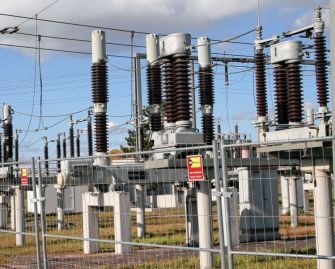
SF6, oil and vacuum circuit breakers
General points to pay attention to when checking high-voltage switches, regardless of their type:
-
the integrity and absence of contamination of the insulation of the bushings;
-
lack of heating of contact connections;
-
absence of noise and crackling in the tank (pole) of the switch;
-
operability of heating the drive cabinets and the switching tank (at low temperatures);
-
the presence and integrity of the circuit breaker tank ground bus;
-
the integrity of the circuit breaker's secondary switching circuits;
-
correspondence of the switch position indicators with their actual state.
When checking the oil switch, in addition to the above, you should pay attention to the oil level in the switch tank, as well as its color. As a rule, transformer oil is light, yellowish. If the oil is dark, it must be changed, as such oil does not fully provide its insulating and arcing characteristics.The oil level in the shift tank should be approximately the same as the average ambient temperature.
When checking SF6 circuit breakers, pay attention to the SF6 gas pressure. The nameplate of the circuit breaker usually shows a plot of the SF6 gas pressure in the circuit breaker versus the ambient temperature (nominal density curve). Therefore, when checking the equipment, including the SF6 breaker, it is necessary to record the current air temperature. Based on the data obtained, it is concluded that the actual pressure of the SF6 gas in the breaker corresponds to the nominal pressure for a given value of the ambient temperature.
Disconnectors
When checking disconnectors of all voltage classes, pay attention to the following points:
-
the integrity of the supporting and traction insulators, the absence of heavy contamination of the insulating coating;
-
the integrity of the ground loop, flexible connections;
-
in the presence of heating of the drive — its operability at low temperatures;
-
absence of visible damage to the structural elements of the disconnector, the drive.
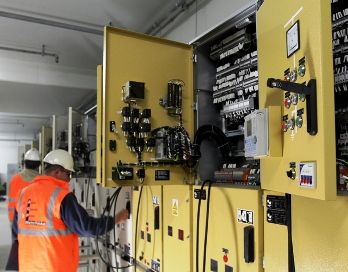
Inspection of shields, installations, protective panels
When checking the equipment of the substation, one of the stages is the check of the equipment of the general control center of the substation (control panel). In this case, AC and DC boards, protection panels, panels for automation and control of equipment elements, storage battery, chargers, communication cabinets, telemechanics and electricity metering are investigated.
When checking AC and DC boards, you should pay attention to the position of switches, circuit breakers, bus voltage levels, the absence of external signals.
When inspecting the protective panels of the equipment, pay attention to the following:
-
correspondence of the position of the switching devices with the actual scheme of the substation in accordance with the map of the switching devices of a particular link;
-
lack of external signals;
-
the on position of the circuit breakers that supply the protective devices.
In addition, when inspecting the equipment cabinets, the operating personnel record the necessary data in the relevant logs and, if necessary, check the operation of the devices and measure the main electrical quantities. For example, reading ammeters, wattmeters, voltmeters, checking the effectiveness of the protection of power lines (exchange of high-frequency signals), fixing the value of the differential current of the DZSh devices of the substation, etc.
During a daily check of the battery, the voltage of the control cells (banks), the density of the electrolyte (of lead-acid batteries) is measured. The battery chargers are also checked, the battery voltage value and the recharge current are recorded. When checking a rechargeable battery, it is necessary to ensure all the necessary safety measures provided for in the instructions for maintaining one or another type of battery. In addition, the operability of the supply and exhaust ventilation and heating systems of the battery room must be checked.
In conclusion, it should be noted that the inspection of electrical installations of substations must be carried out in accordance with the requirements of the rules for the safe operation of electrical installations and with the use of the necessary personal protective equipment.

